Stucco exteriors offer a versatile canvas for homeowners to express architectural character and personal style. From timeless neutrals that highlight texture and form to unexpected bold hues that make a statement, selecting the right stucco color can dramatically influence curb appeal and ambiance. Neutral palettes like whites, grays, and taupes remain perennial favorites for their elegance and compatibility with diverse architectural styles , while pops of color—from soft yellows to muted greens and pastel pinks—have gained traction for adding warmth and modern flair. Below are 20 thoughtfully curated stucco colors that blend tradition and trend to enhance home exteriors.
1. Pure White
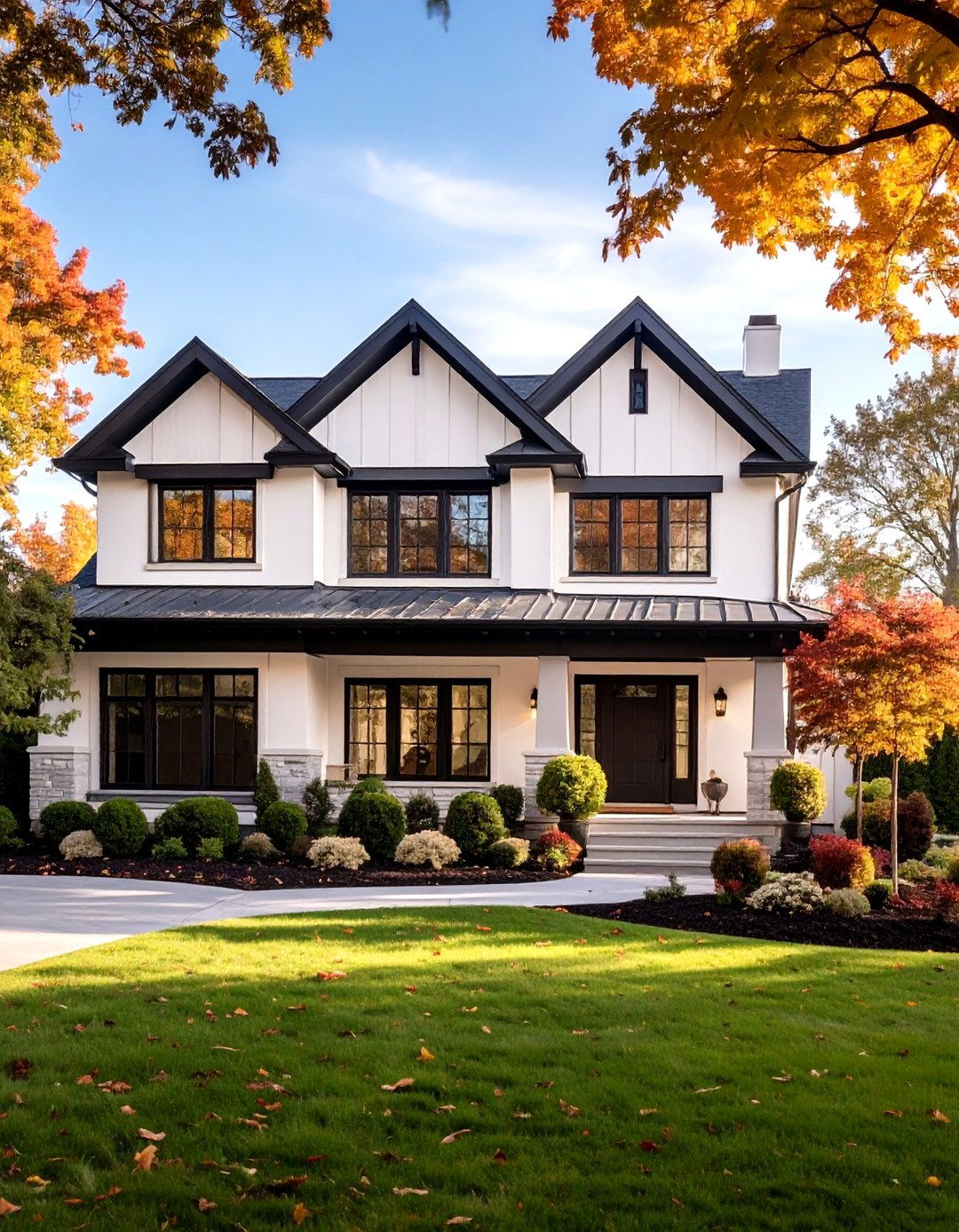
A crisp, pure white stucco finish creates a clean, minimalist aesthetic that showcases architectural details and plays beautifully with natural light. Ideal for modern, Mediterranean, and coastal-style homes, this hue reflects heat and brightens facades, making small structures feel larger. Pure white offers a timeless backdrop for contrasting trim or vibrant landscaping, and its neutrality adapts well over time, minimizing the need for repainting due to passing trends.
2. Creamy White Chocolate OC-127
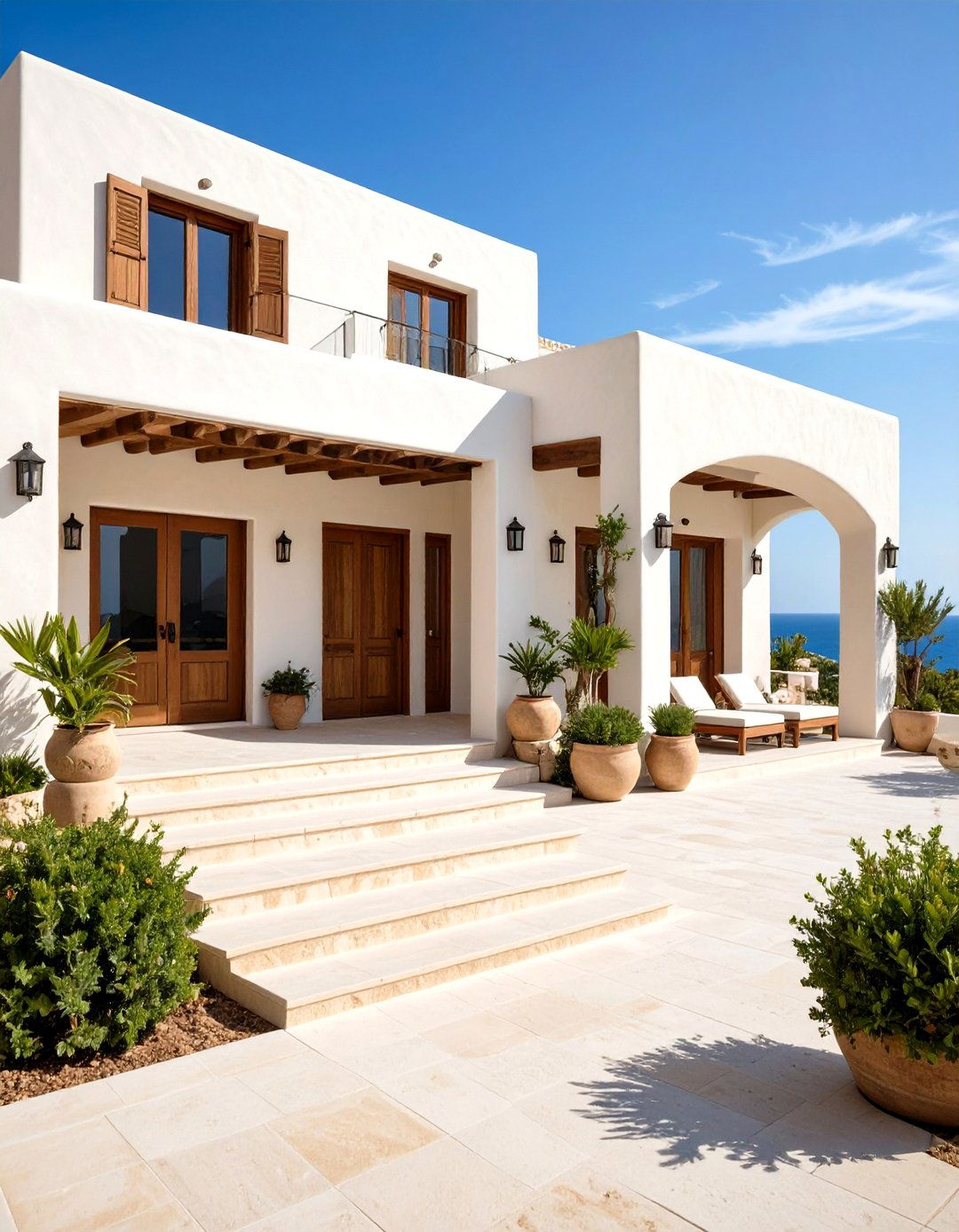
Benjamin Moore’s White Chocolate OC-127 is a soft, creamy shade with subtle undertones of beige that soften harsh sunlight and lend a welcoming warmth to stucco walls. This color enhances traditional and contemporary designs alike, pairing seamlessly with dark shutters or natural wood accents. Its gentle warmth prevents a stark appearance while still offering the crispness of white, making it a versatile choice for a range of climates.
3. Alabaster
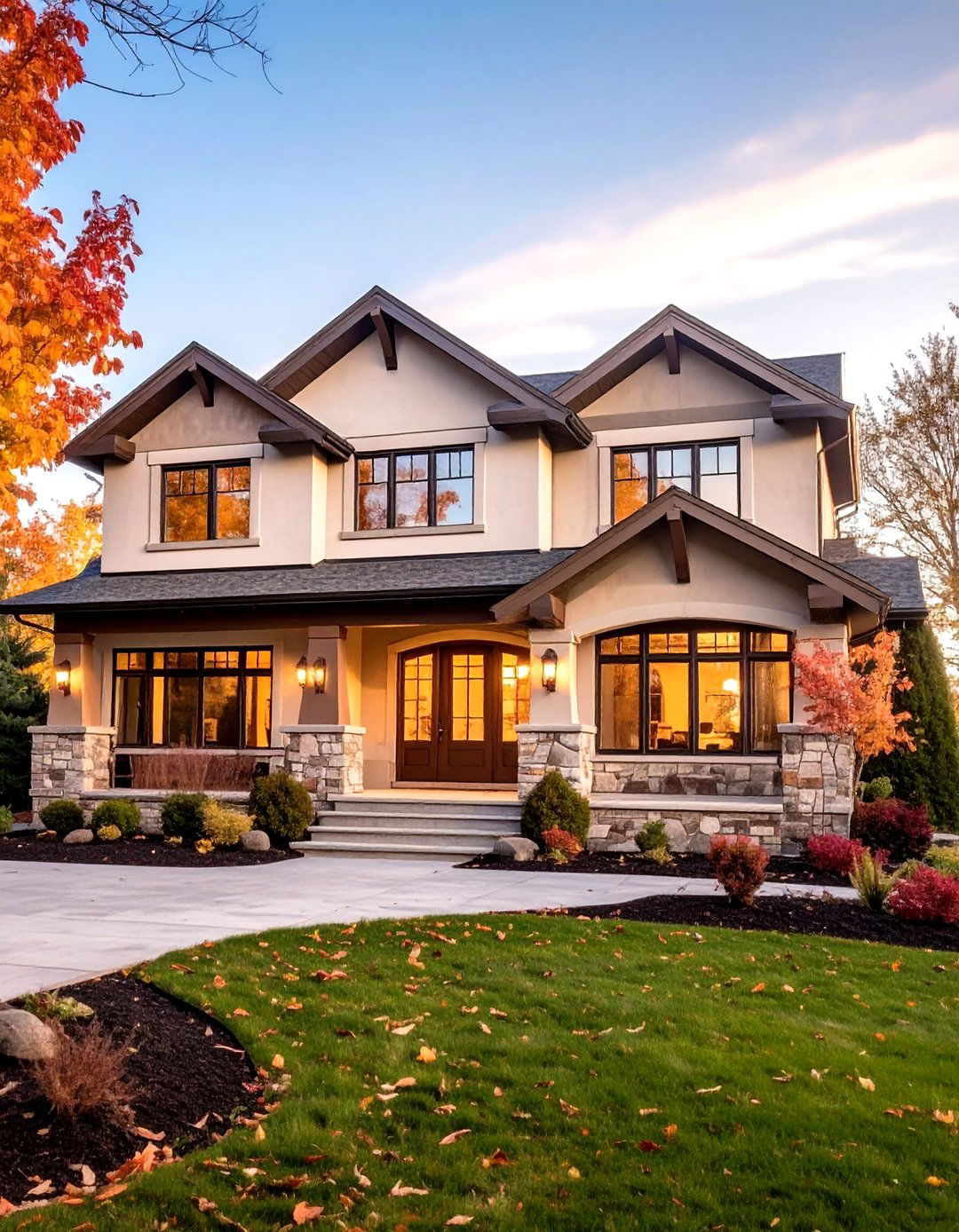
Sherwin-Williams’ Alabaster is a warm off-white that balances bright and muted qualities, ensuring facades appear inviting without feeling sterile. Favored by designers for its adaptable undertones, Alabaster complements both modern trim colors and rustic stone accents, delivering a sophisticated yet approachable exterior. Its subtle depth hides minor imperfections in stucco surfaces, prolonging the need for maintenance and repainting.
4. Shoji White
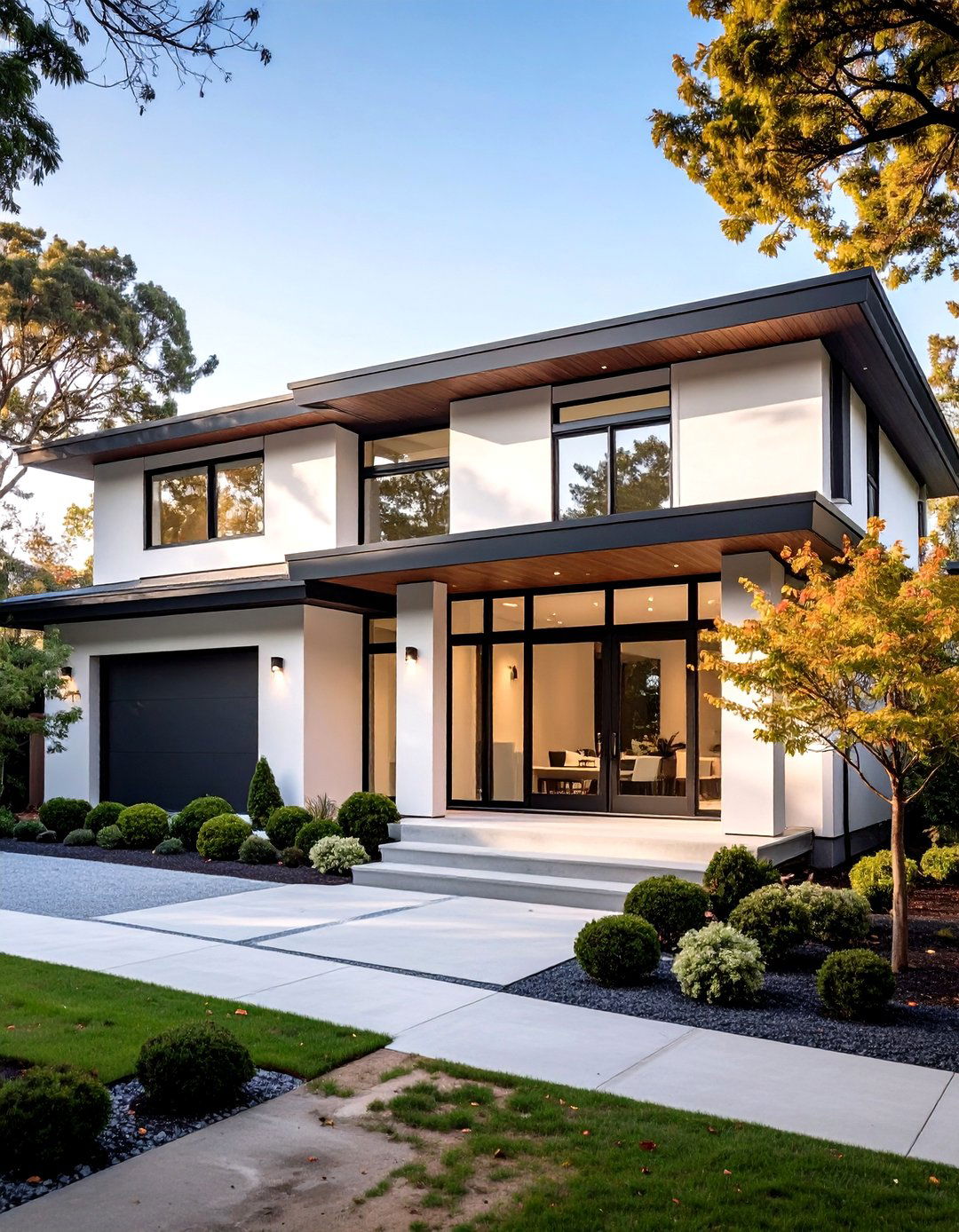
Also from Sherwin-Williams, Shoji White boasts creamier undertones than pure white, creating a serene, spa-like ambiance on stucco exteriors. This hue works exceptionally well for homes with dark metal or wood trim, offering a neutral backdrop that accentuates textures and architectural lines. Its soft warmth is particularly flattering under varying light conditions, ensuring consistency in curb appeal throughout the day.
5. Chantilly Lace

Benjamin Moore’s Chantilly Lace is among the brightest whites available, known for its cool undertones that resist yellowing over time. On stucco, it produces a strikingly clean finish that stands out in urban and rural settings alike. This shade is ideal when a crisp contrast between walls and darker accent colors is desired, emphasizing trim work and landscape features.
6. Ivory
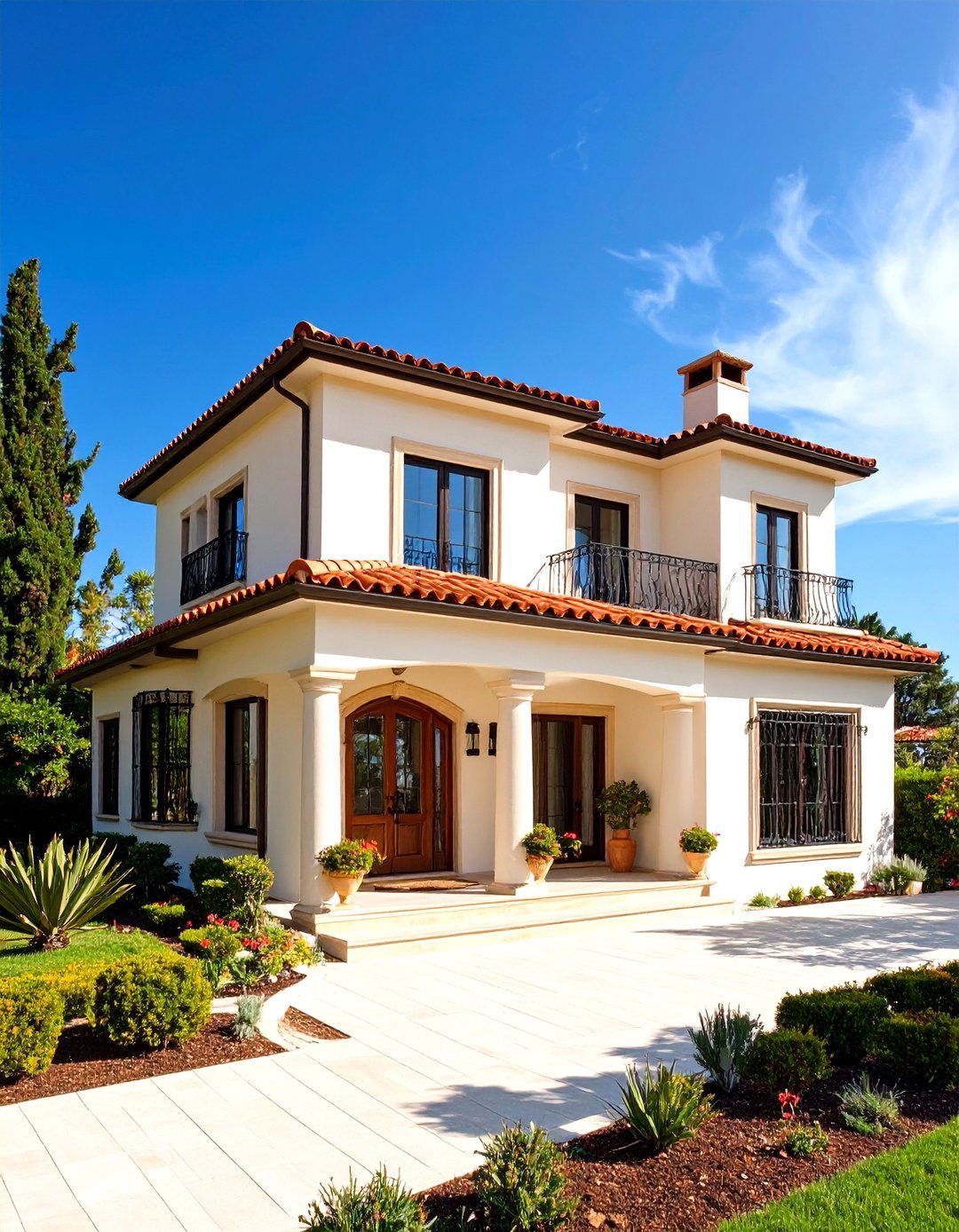
A step deeper than pure white, ivory imparts a gentle warmth reminiscent of sand and natural stone. This neutral is perfect for Mediterranean- or Spanish-style stucco homes, blending harmoniously with terracotta roof tiles and wrought-iron accents. Ivory’s richness adds depth without overwhelming, giving exteriors a classic, enduring elegance that complements lush greenery.
7. Light Gray
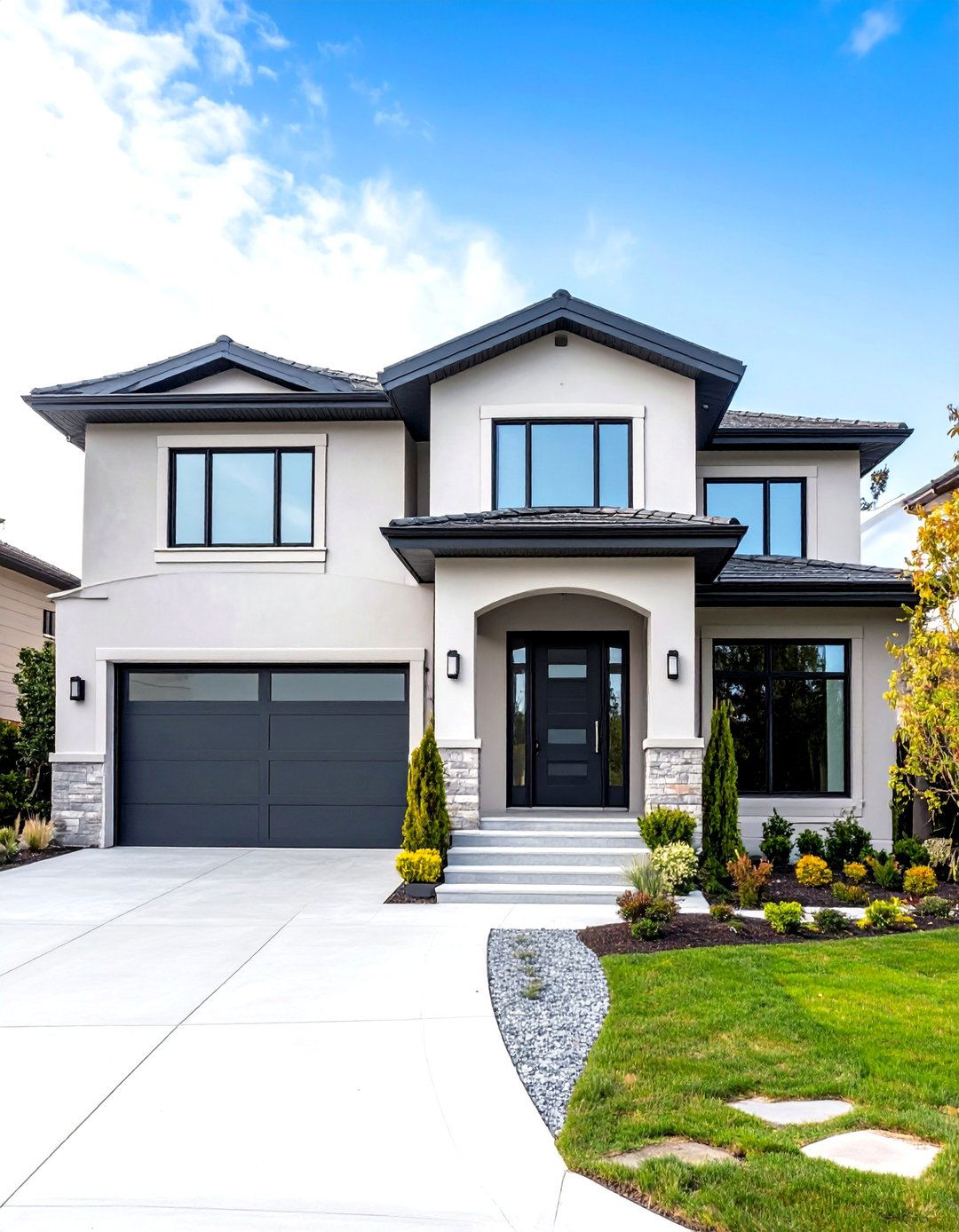
Soft gray stucco offers a contemporary alternative to white, creating a sleek, minimalist appearance. Light gray serves as a neutral backdrop for bold accent doors or trim and pairs well with concrete, steel, and glass elements in modern architecture. Its ability to conceal dirt and minor imperfections makes it practical, while its cool undertones evoke a refined, urban-chic vibe.
8. Warm Taupe
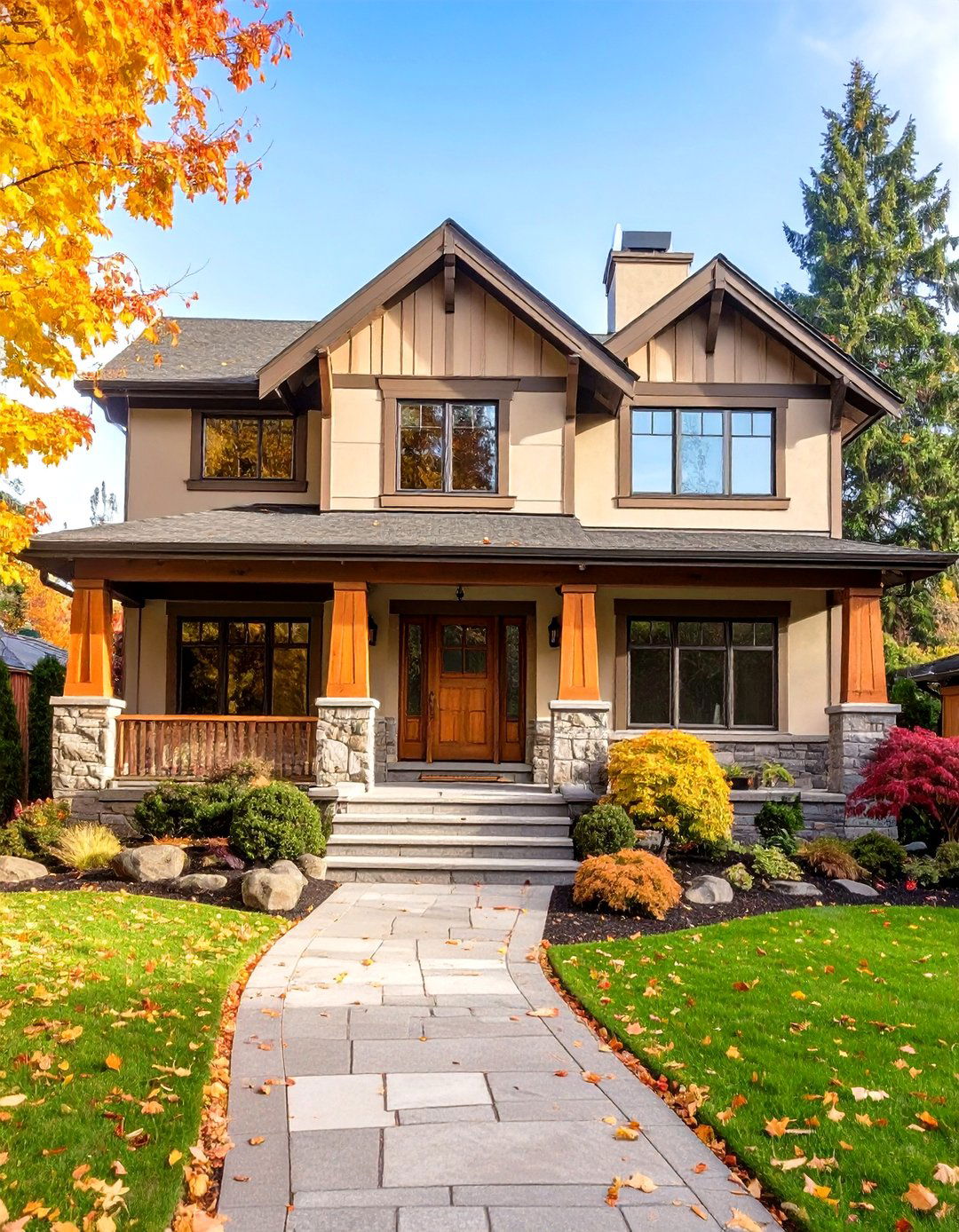
Warm taupe balances gray and beige for a sophisticated neutral that enhances traditional and transitional home styles. This versatile hue harmonizes with stone veneers, brick accents, and natural wood, making it a go-to choice for diverse exterior palettes. Warm taupe’s richness adds subtle depth to stucco textures, creating visual interest without competing with landscaping ����citeturn0search8.
9. Charcoal Gray

Dark charcoal stucco delivers drama and modern elegance, particularly on minimalist or industrial-inspired homes. Its deep tone accentuates stucco’s tactile surface, casting dynamic shadows that change throughout the day. Charcoal pairs beautifully with metal, glass, and natural wood, making it a bold choice for homeowners seeking a statement exterior that remains sophisticated and low-maintenance.
10. Almost-Black
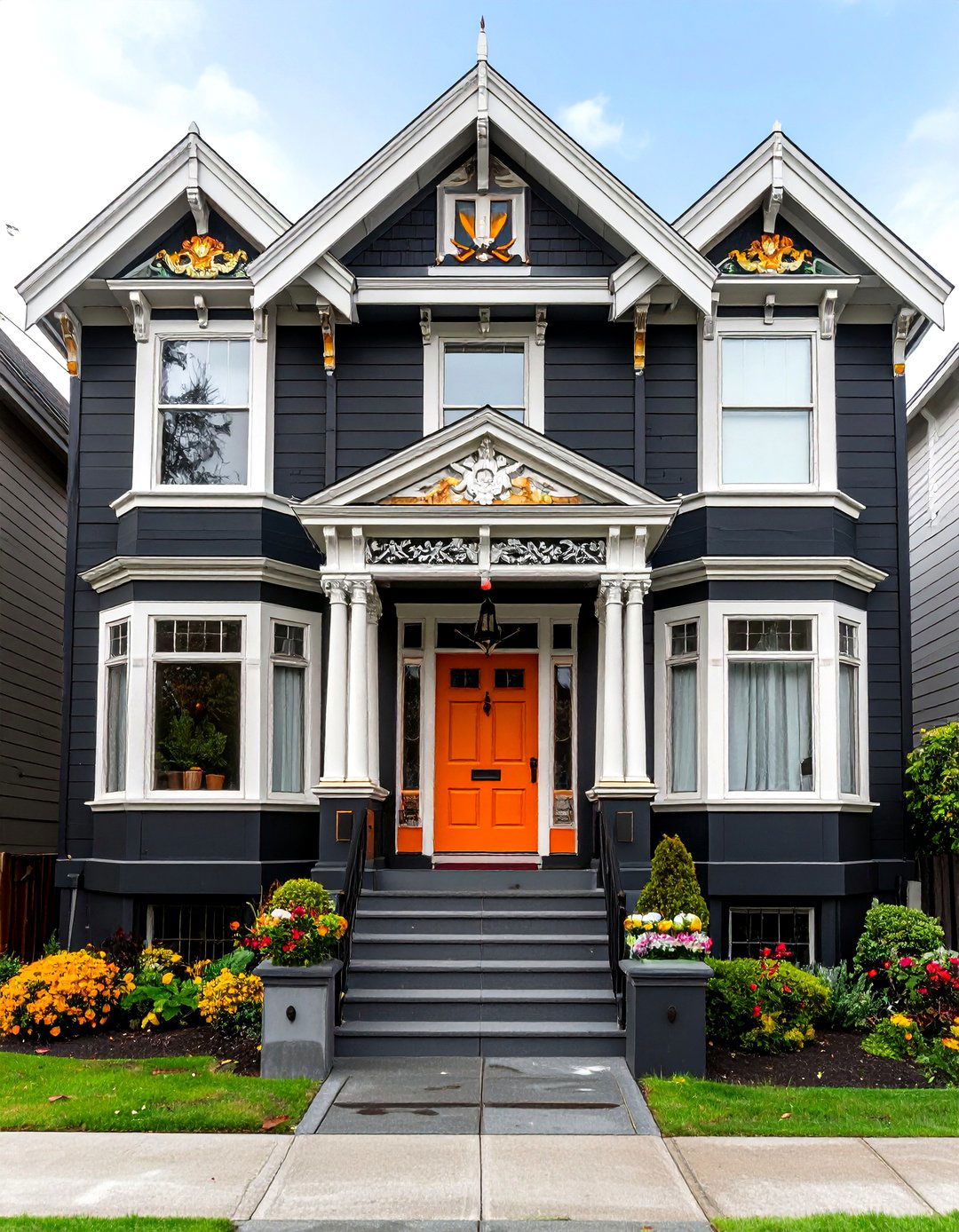
Going beyond charcoal, nearly black stucco creates a striking, avant-garde facade. This color heightens contrast with lighter trim and landscape features, providing a bold silhouette against the sky. Almost-black stucco is ideal for accent walls or entire facades on modern homes, offering a dramatic canvas that emphasizes architectural form and materials.
11. Soft Yellow (Daybreak)
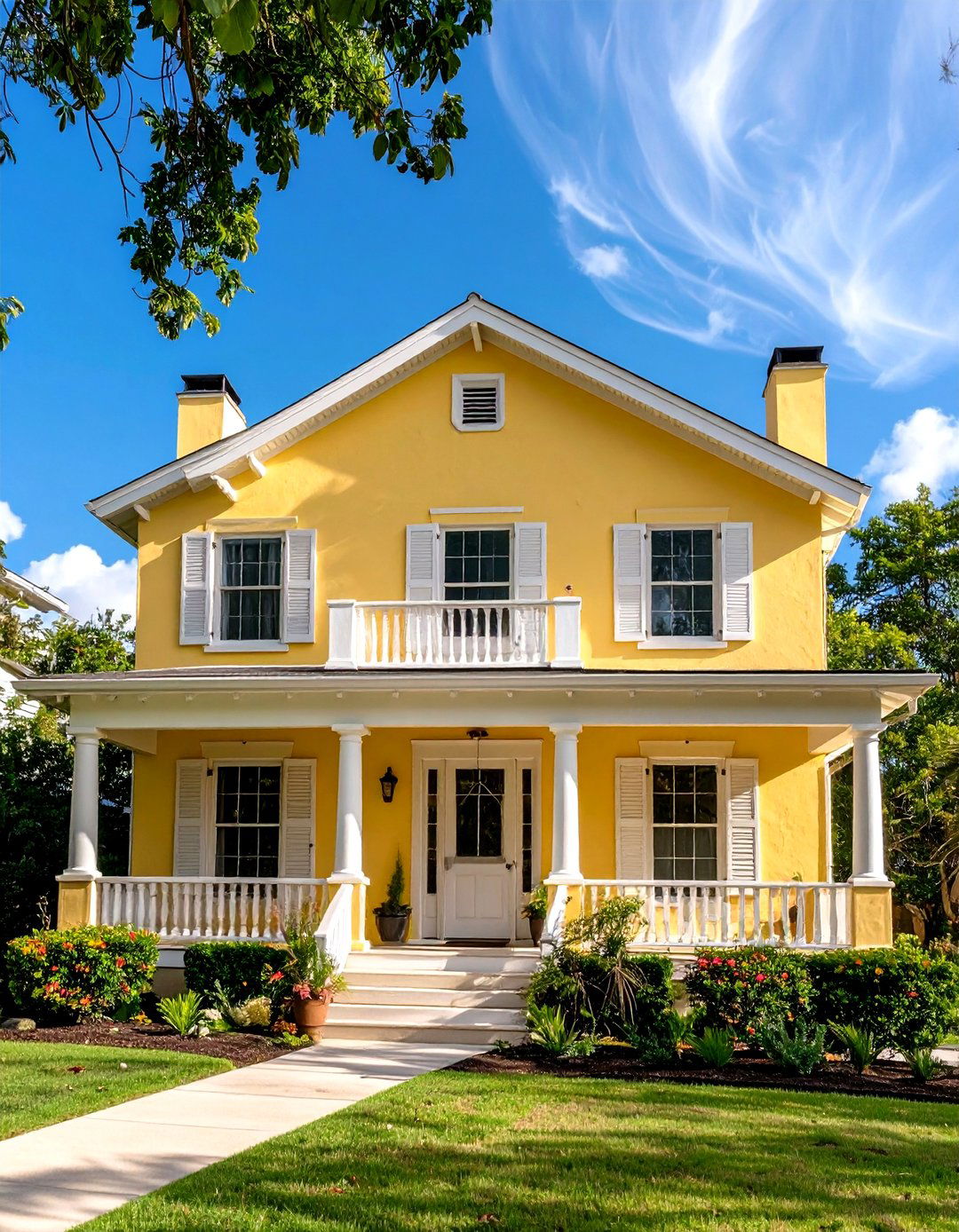
Sherwin-Williams’ Daybreak offers a gentle yellow hue that brightens stucco exteriors without overwhelming. This soft tone evokes sunshine and pairs well with white trim, muted grays, and natural wood elements. Soft yellow stucco adds warmth and cheer, making it especially appealing in coastal or cottage-style homes where a light, airy feel is desired.
12. Vanilla Milkshake OC-59
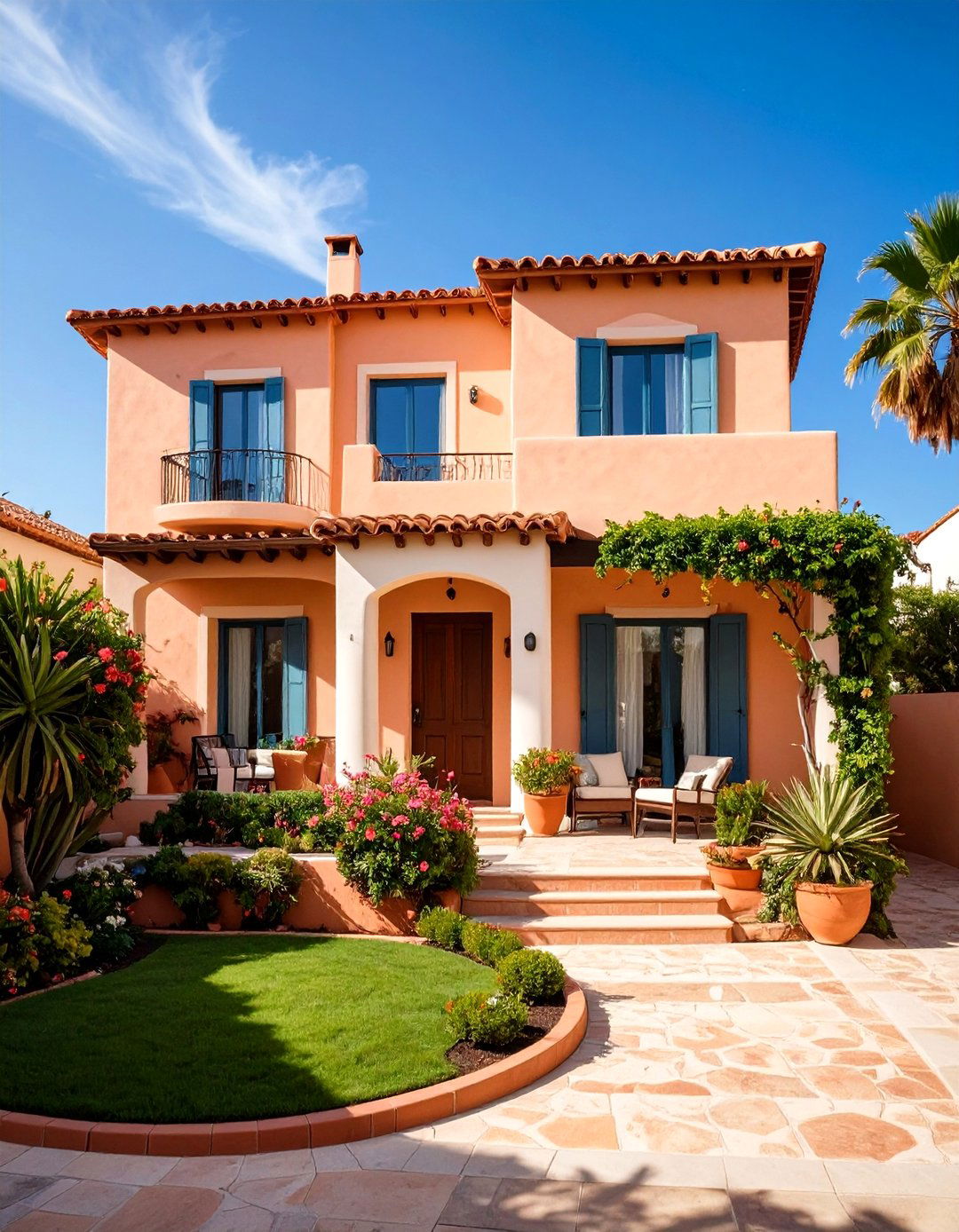
Benjamin Moore’s Vanilla Milkshake OC-59 is a warm, creamy yellow that imbues stucco walls with a cozy, inviting glow. This hue complements darker window frames and terra-cotta accents, enhancing both Mediterranean and Craftsman-style exteriors. Vanilla Milkshake’s gentle depth reduces harsh glare, creating a balanced, homey ambiance in varied lighting conditions.
13. Cedar Key OC-16

Also from Benjamin Moore, Cedar Key OC-16 is a muted yellow with subtle gray undertones, providing a sophisticated take on classic stucco tans. This color works beautifully with warm stone accents and dark trim, offering a timeless curb appeal. Cedar Key’s subdued warmth lends a serene, grounded character to exterior walls, blending seamlessly with natural surroundings.
14. Aberdeen Green 631
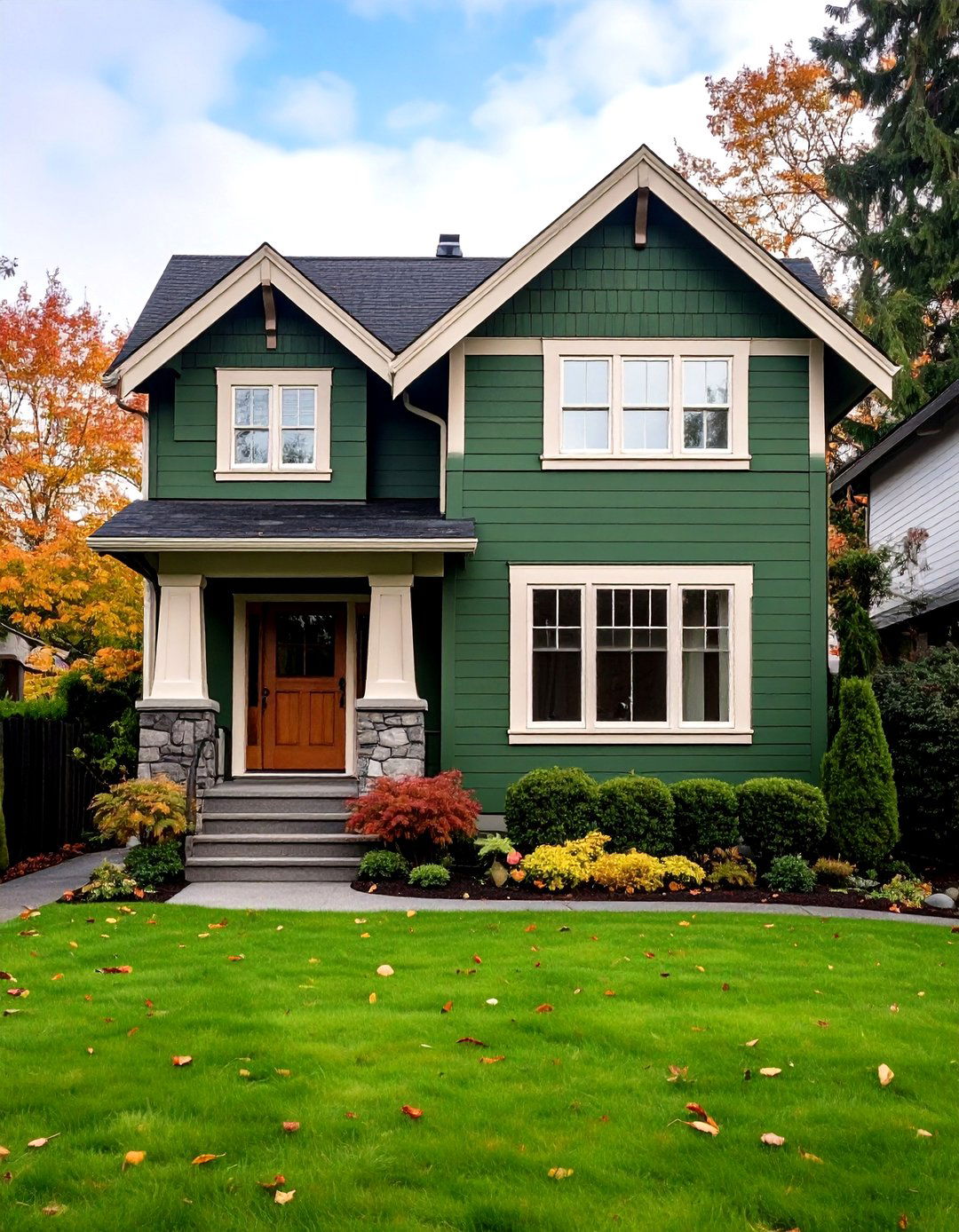
Benjamin Moore’s Aberdeen Green 631 is a deep, muted green that recalls English countryside estates. On stucco exteriors, this shade adds richness and sophistication, pairing well with cream trim and natural stone details. Aberdeen Green enhances landscaping by echoing foliage, creating a harmonious transition between structure and garden.
15. Sage Green
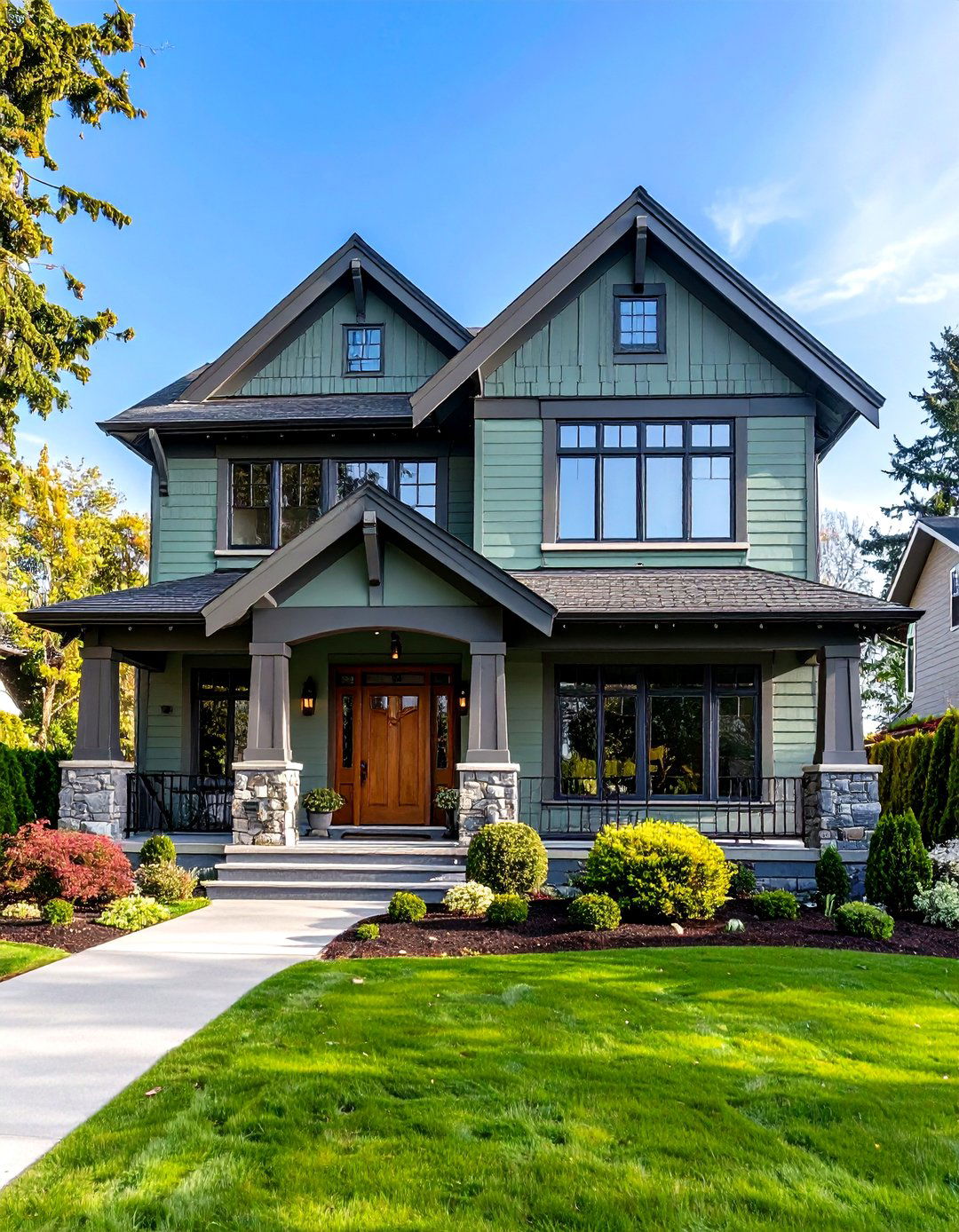
Soft sage stucco blends green and gray for a calming, earthy hue ideal for contemporary cottages and bungalow-style homes. This muted green provides a soothing backdrop for white or dark trim accents and works well in wooded or desert landscapes. Sage’s understated elegance adds character without overpowering, ensuring a cohesive, nature-inspired exterior palette.
16. Essex Green
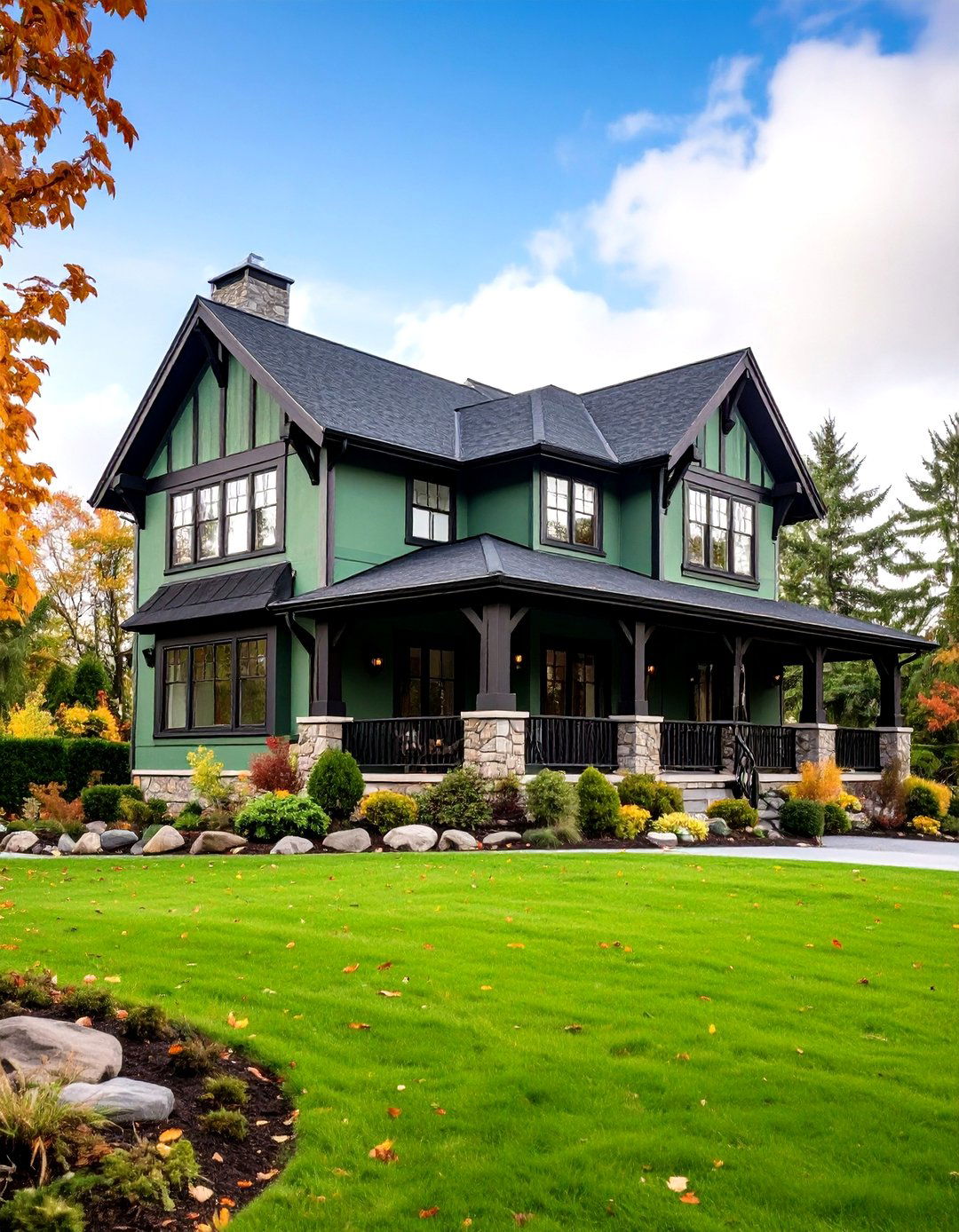
Farrow & Ball’s Essex Green is a deep, subdued green that brings an air of stately elegance to stucco facades. This rich hue pairs beautifully with natural timbers, black ironwork, and stone foundations, making it suitable for both historic and modern homes. Essex Green’s versatility ensures it complements diverse landscaping schemes, from manicured lawns to native plant gardens.
17. Nearly Peach
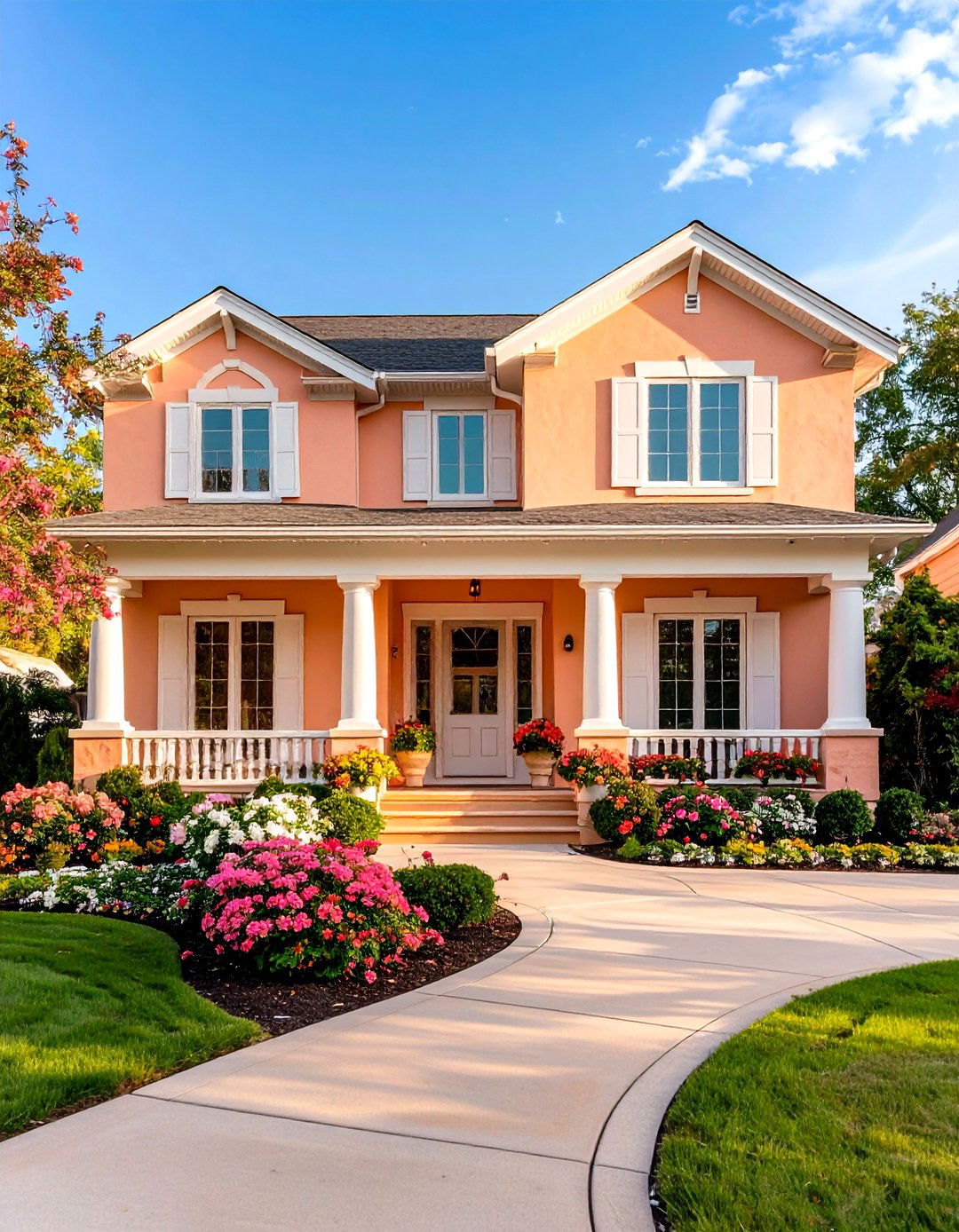
Sherwin-Williams’ Nearly Peach offers a warm, peachy undertone perfect for adding a soft, playful twist to stucco exteriors. This unexpected hue creates a unique, inviting facade that stands out without feeling garish. Nearly Peach pairs best with white trim and muted earth tones, providing a fresh, modern update to traditional stucco styles.
18. Terracotta
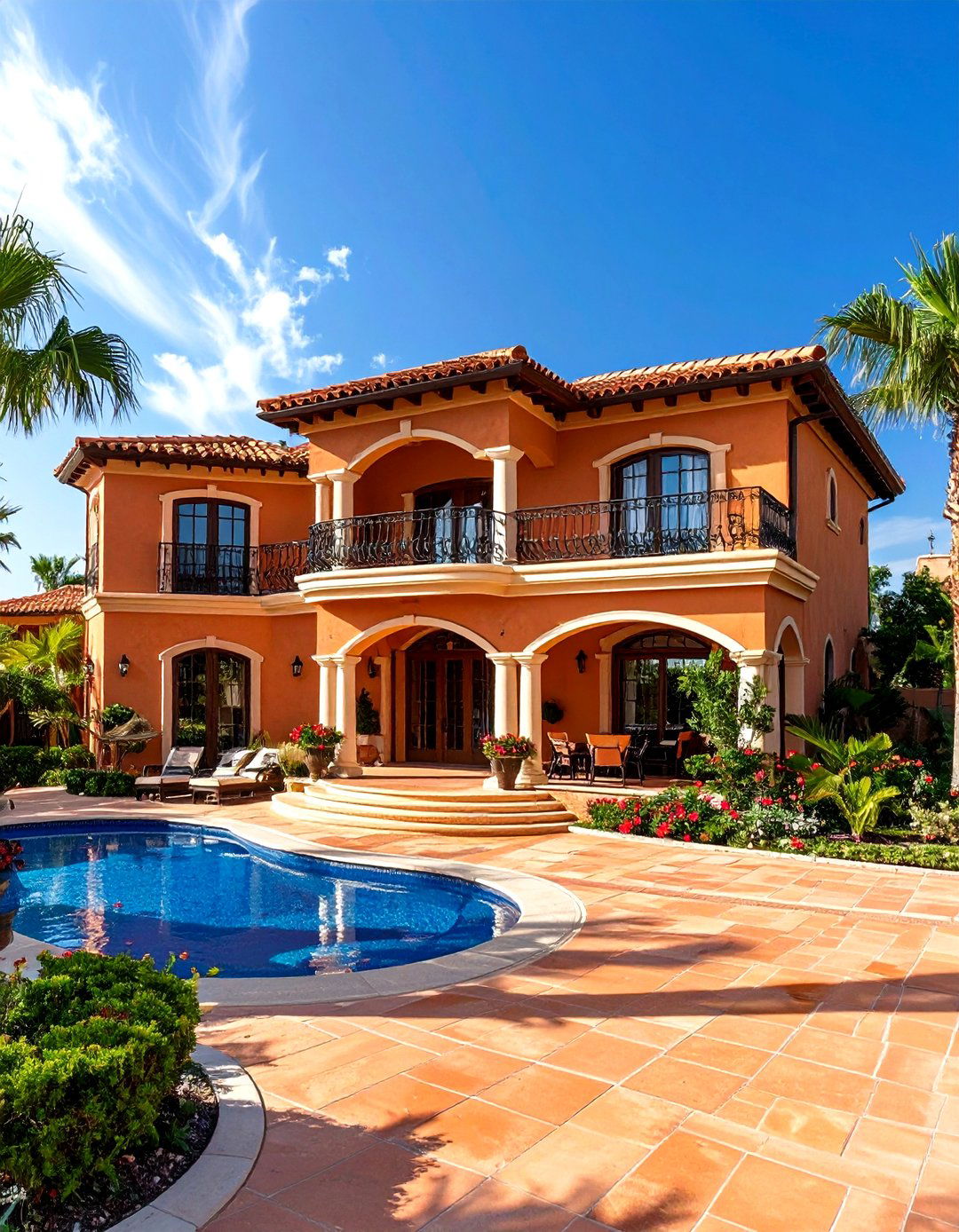
Classic terracotta stucco recalls Mediterranean villas and Southwestern adobe structures. Its earthy orange-red tone exudes warmth and authenticity, harmonizing with wrought iron, dark wood beams, and clay roof tiles. Terracotta adds depth and rustic charm to exteriors, making it a perfect choice for homeowners seeking an organic, sun-soaked aesthetic.
19. Deep Orange
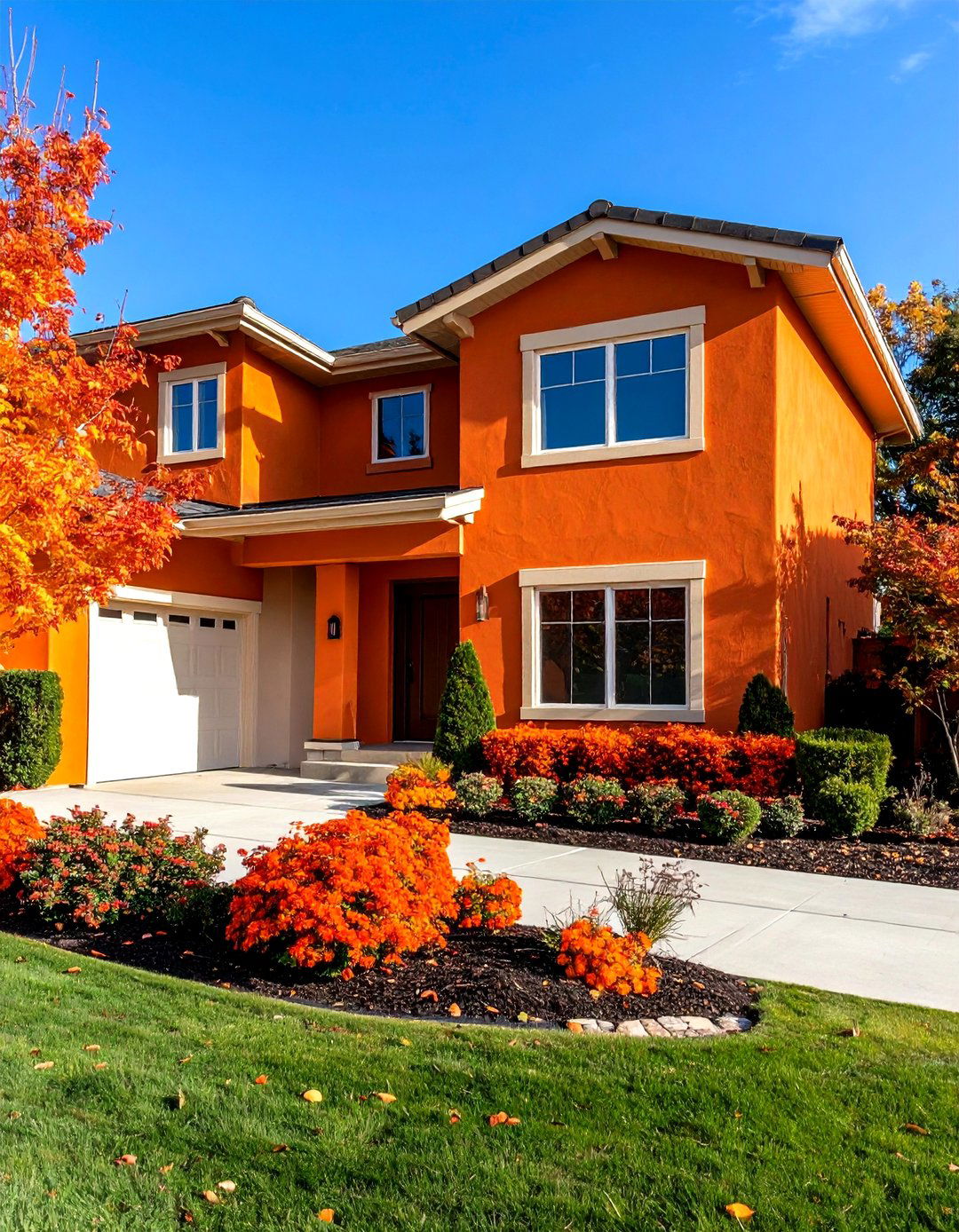
A bolder take on terracotta, deep orange stucco commands attention and infuses energy into architectural forms. This vibrant hue works best as an accent wall or entryway highlight on modern and eclectic homes. Pair deep orange with neutral trims—such as off-white or charcoal—to balance its intensity and maintain a cohesive exterior palette.
20. Pale Pink (SW 9696)

Sherwin-Williams’ Pale Pink SW 9696 offers a soft, dusty rose hue that brings subtle warmth and character to stucco facades. This pastel shade adds a romantic, whimsical touch to cottage and coastal-style homes, harmonizing with white trim and natural stone accents. Pale Pink creates a gentle, inviting atmosphere, proving that stucco need not be limited to neutrals and earth tones.
Conclusion:
Choosing the right stucco color is a balance between architectural style, environmental context, and personal taste. Neutral shades like whites, grays, and taupes provide timeless appeal and flexibility, while bolder hues—yellows, greens, peaches, and pinks—offer opportunities to personalize and energize facades. By considering factors such as climate, lighting, and complementary materials, homeowners can select a stucco color that enhances curb appeal, reflects individual style, and stands the test of time.



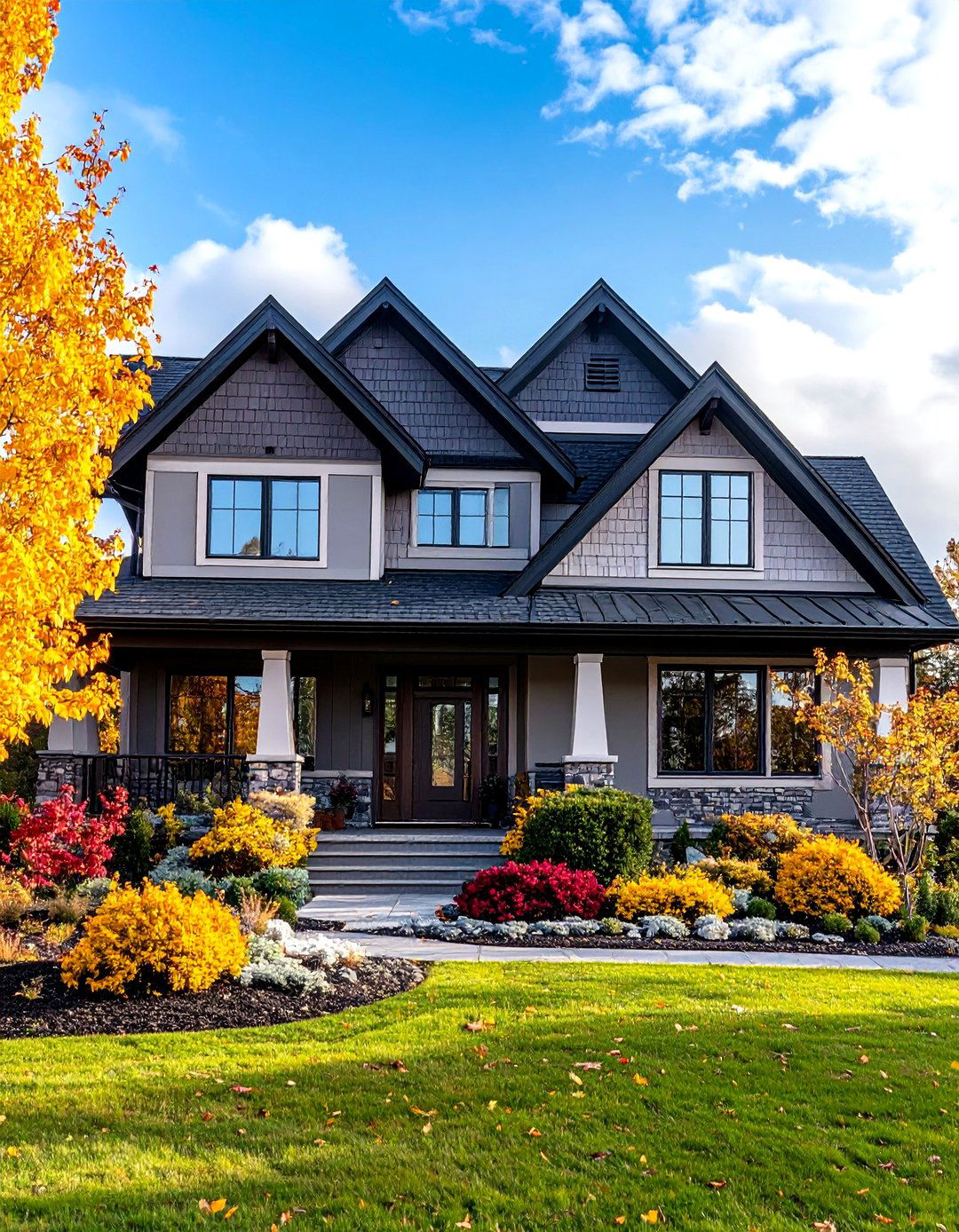
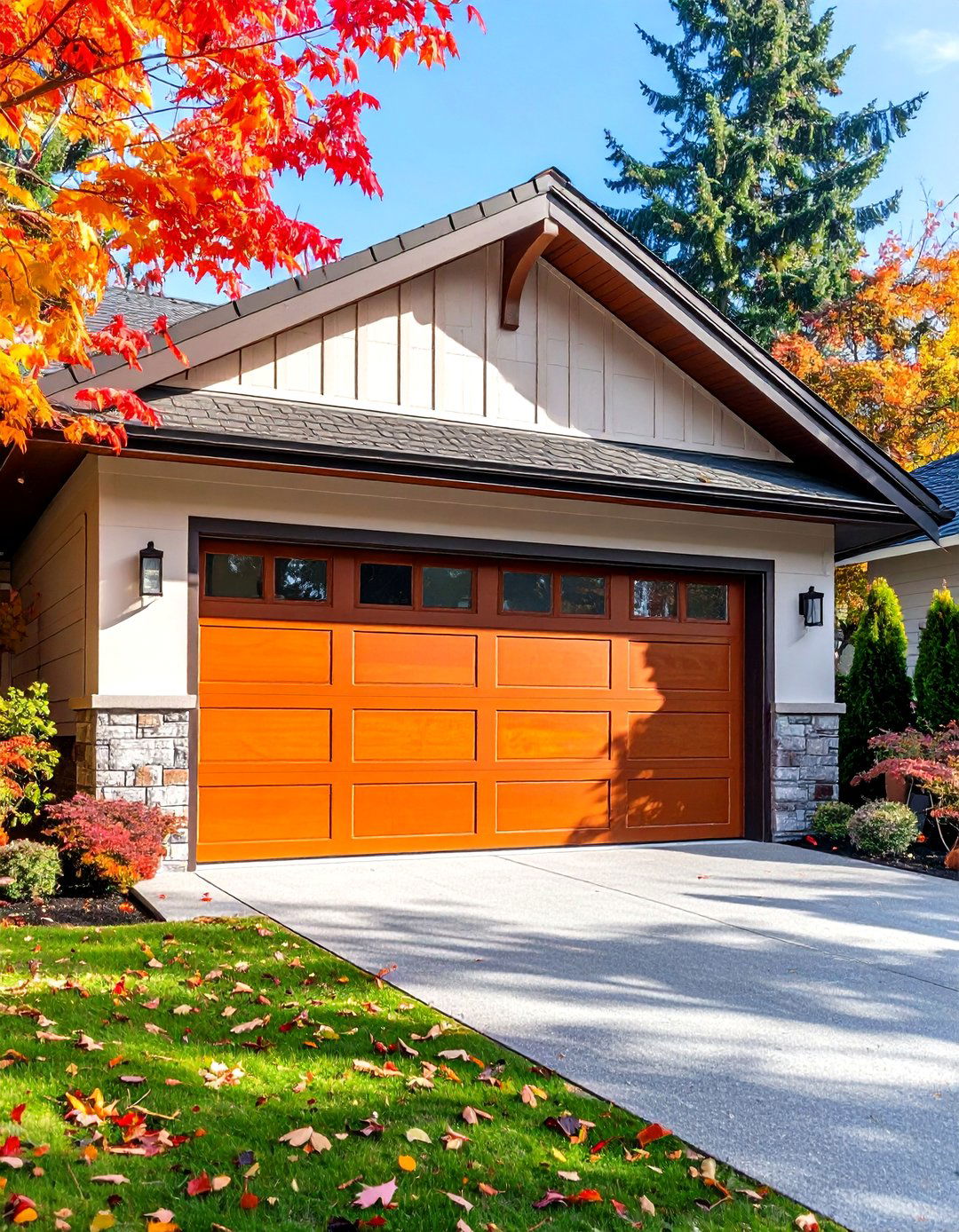

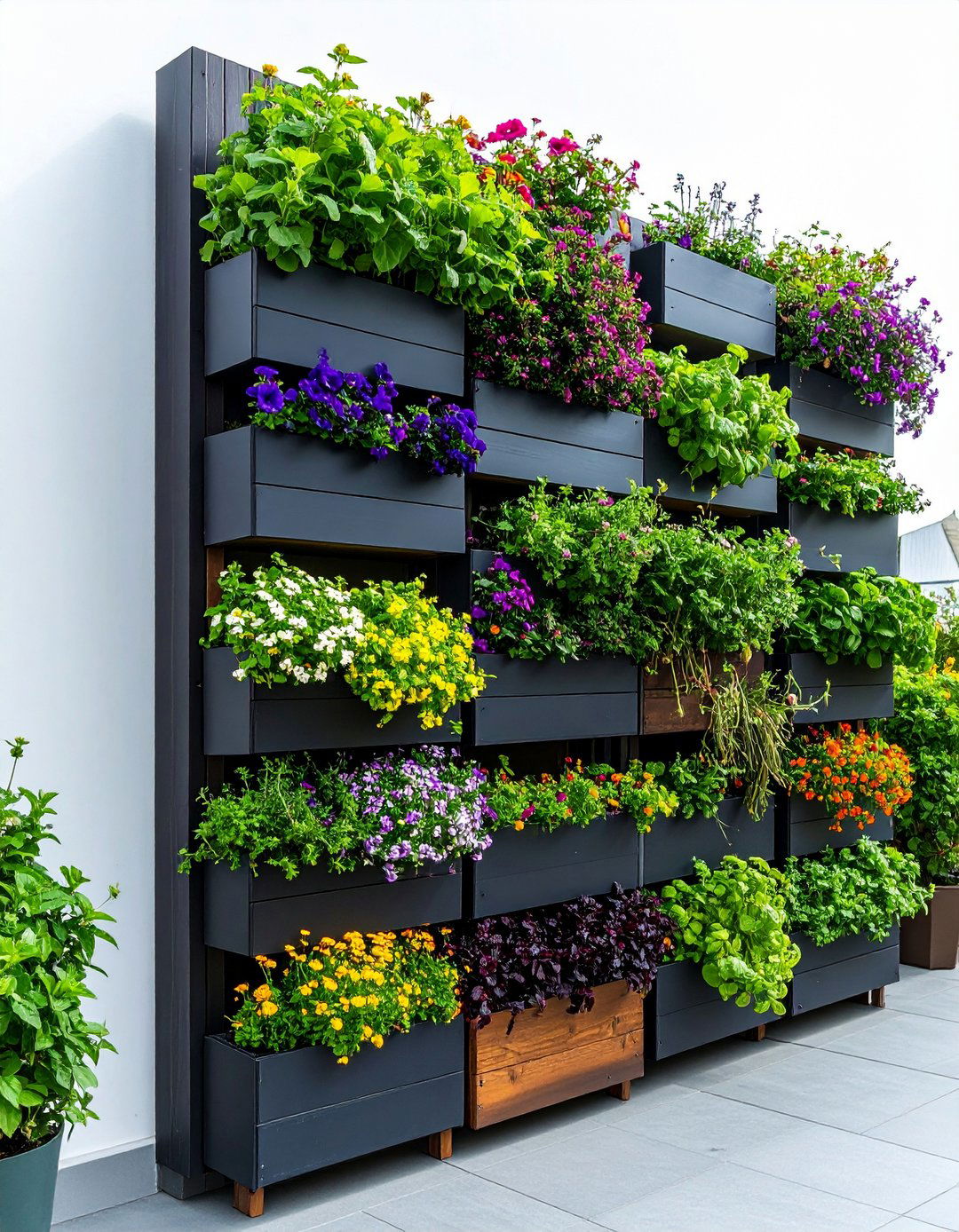
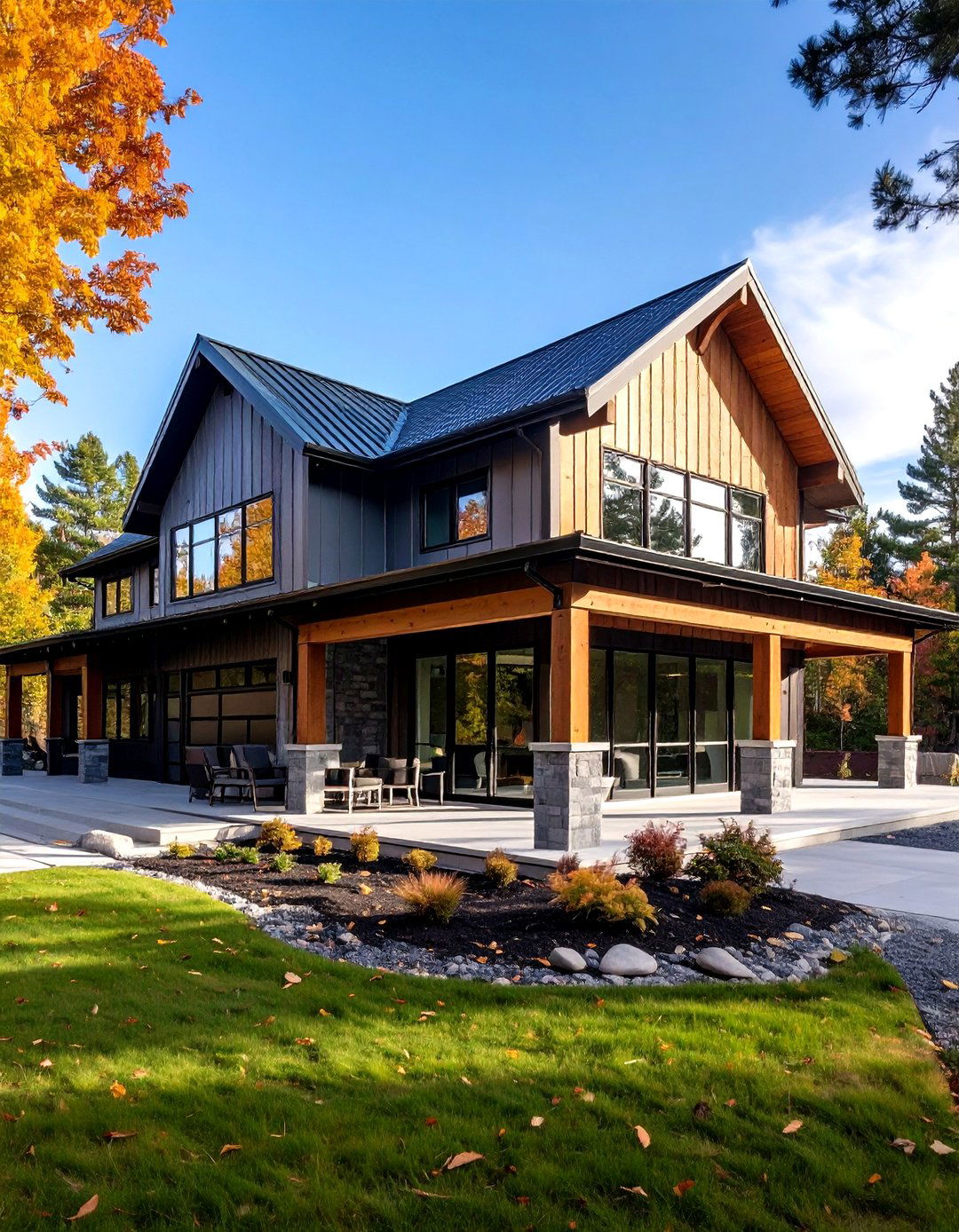
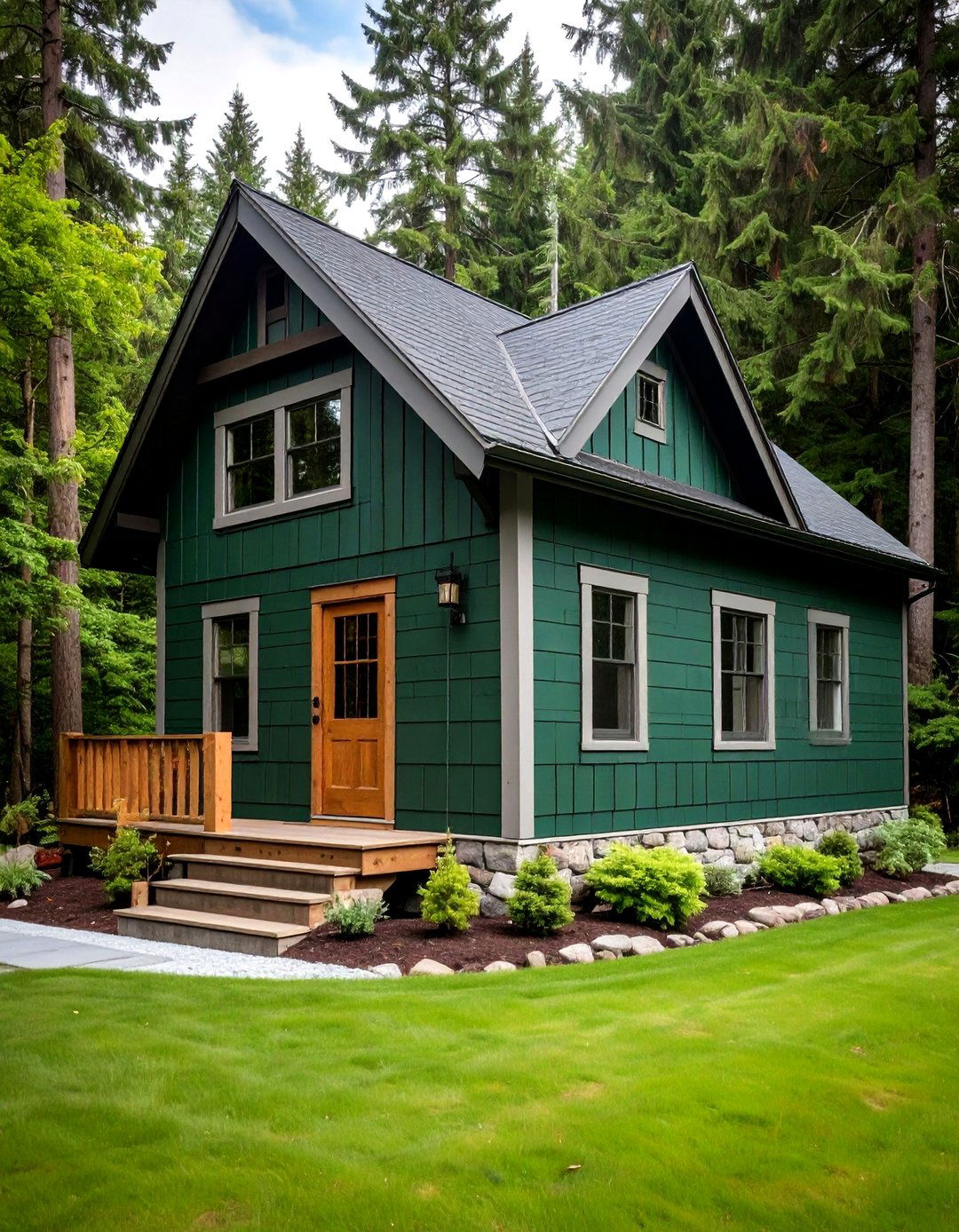
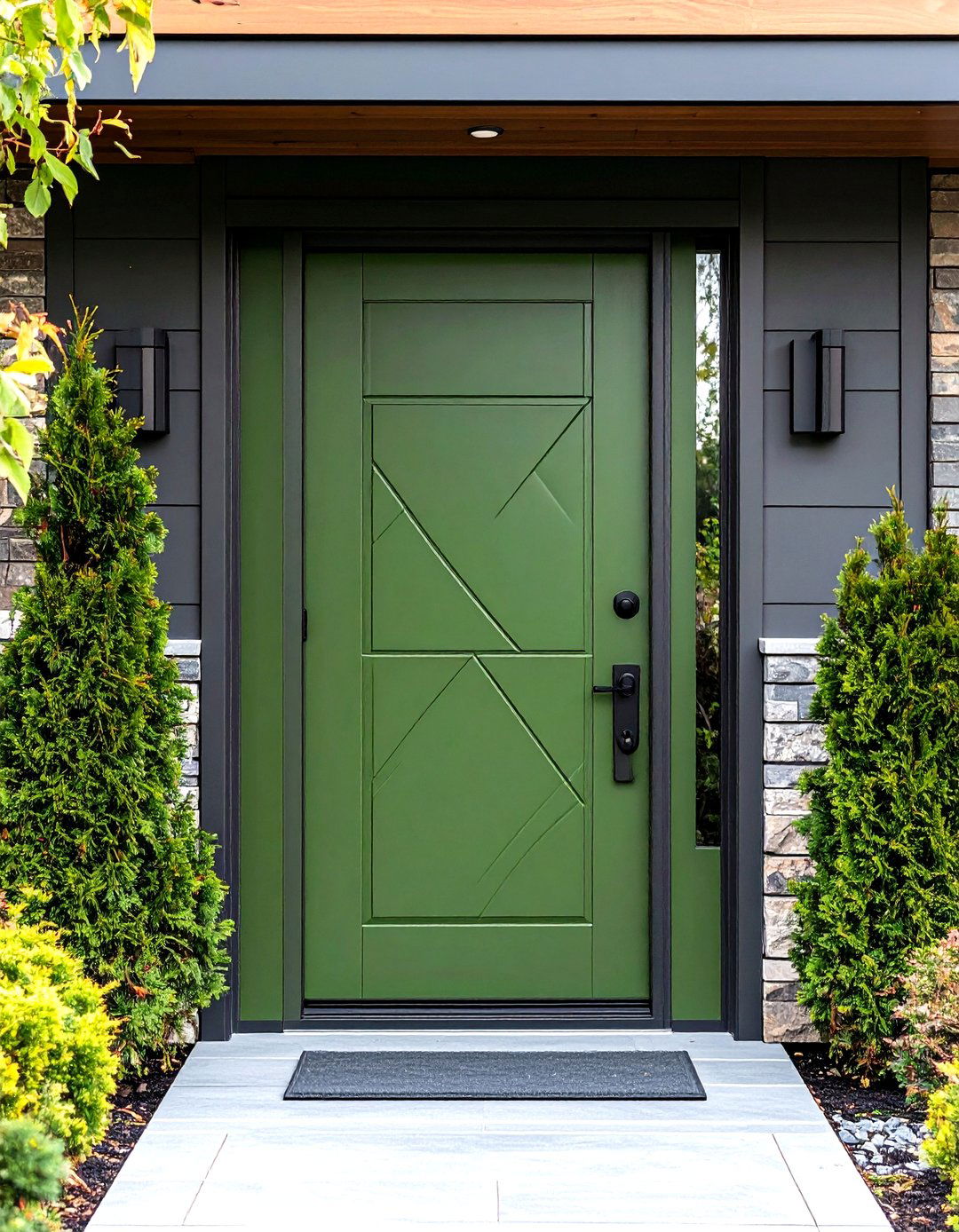
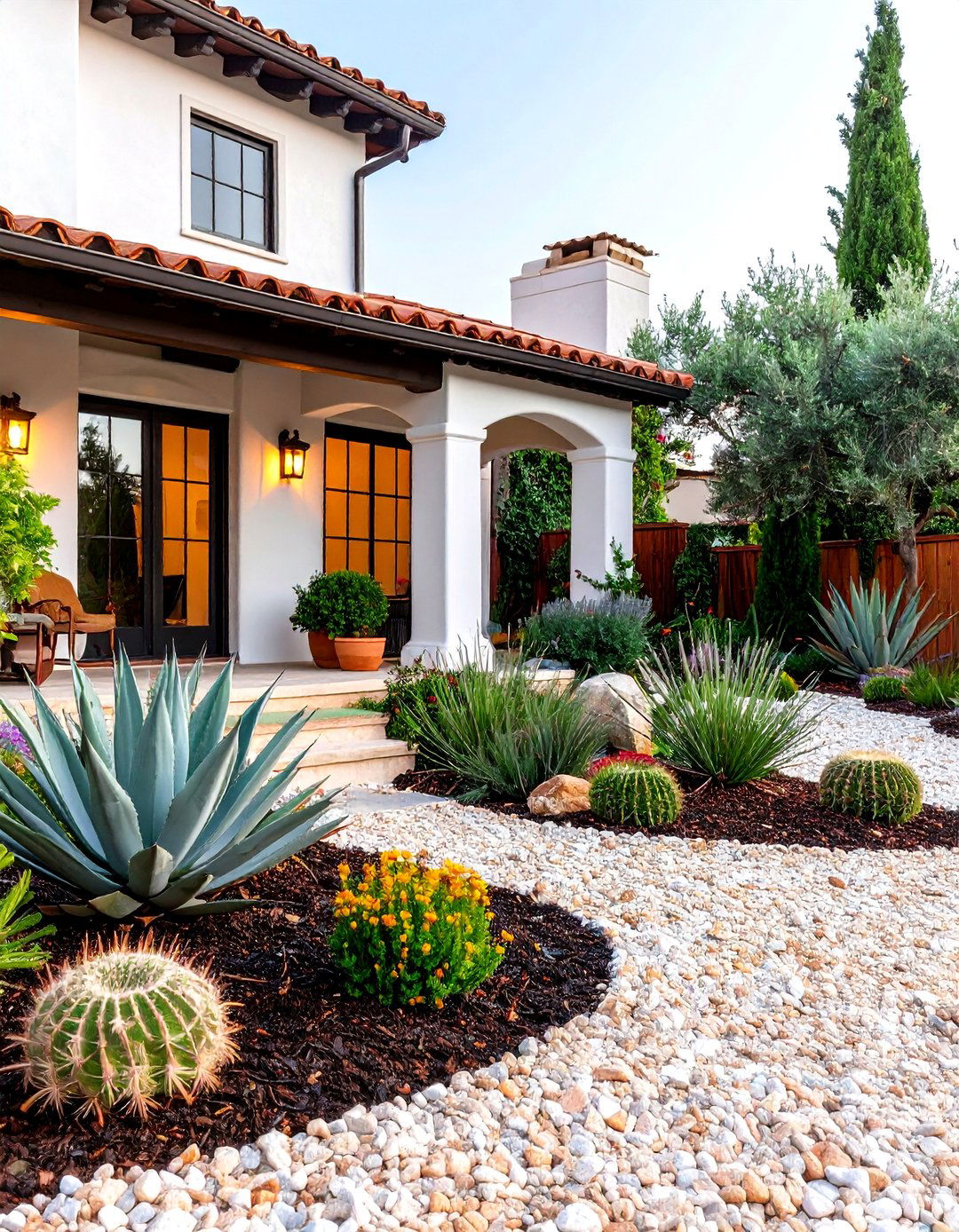
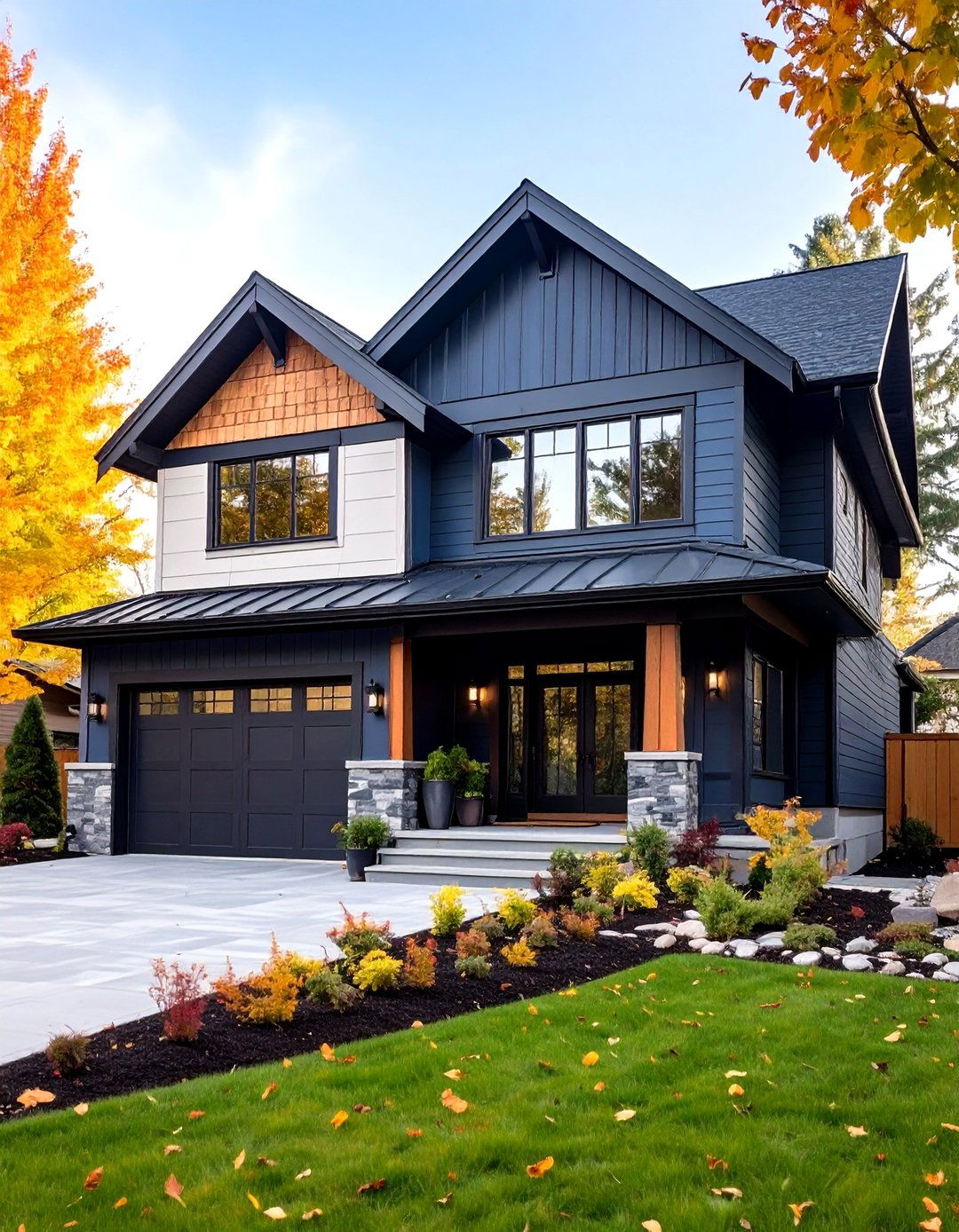



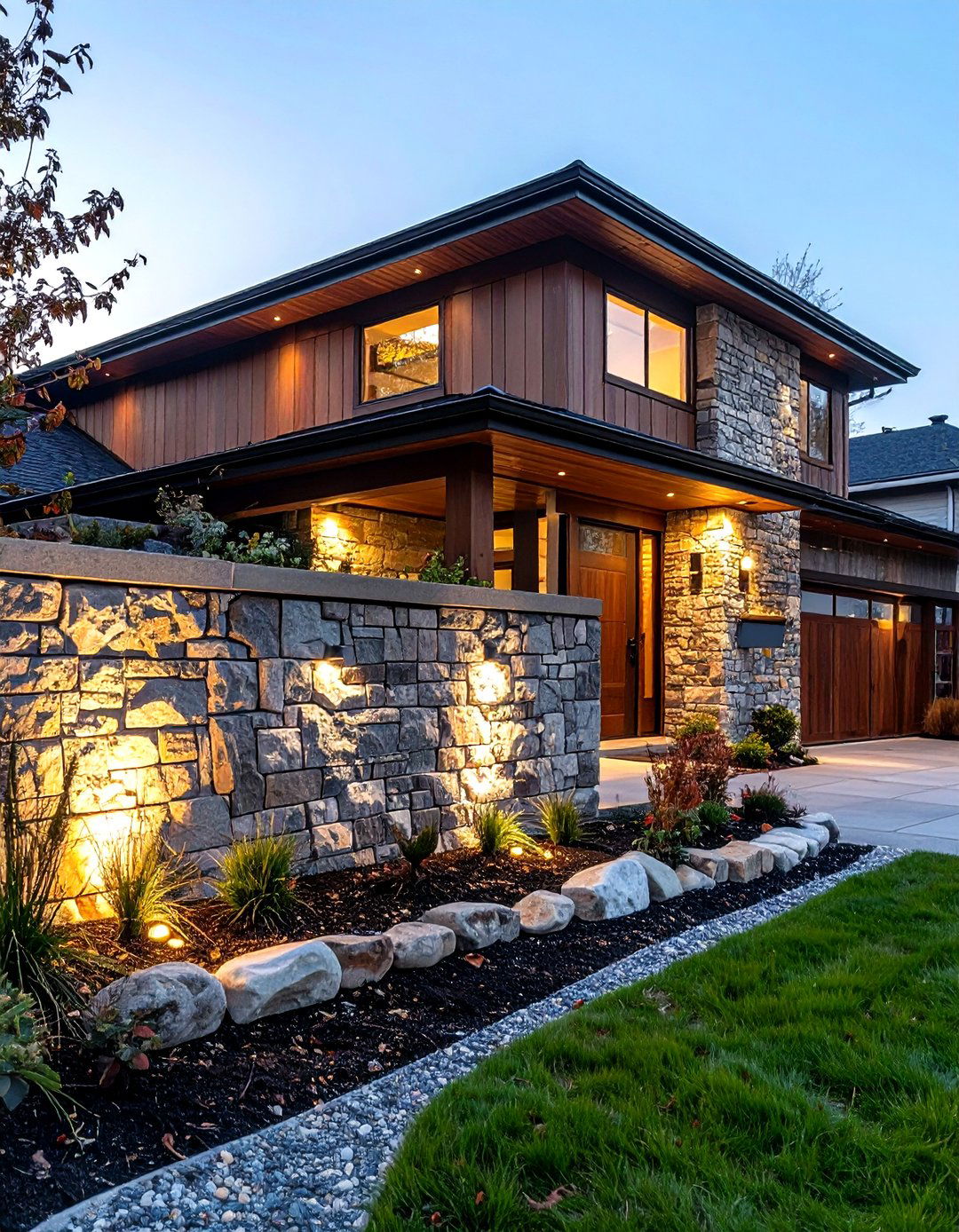
Leave a Reply